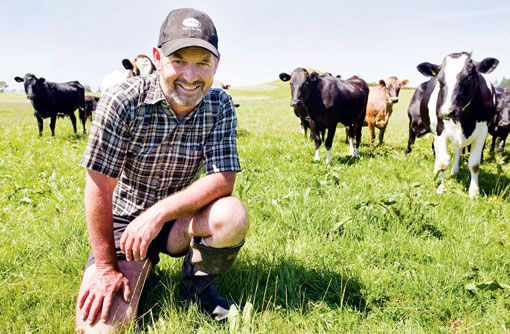Farming under pressure in New Zealand

It’s been a tough month. Until yesterday it still continued to be wet and soil temperatures have fallen, restricting grass growth. The organic farm is still supplementing with silage and is on the “edge” for grass. The home farm is supplementing in the evening with palm kernel expeller.
Both herds are milking at record per cow levels, which is surprising given the conditions. Organic cows have been having a lot of milk fever, which we attribute to a lack of sunshine and possibly elevated potassium from the compost. We have an outstanding 56 organic heifer replacements and only 40 conventional heifer replacements.
All the yearling heifers were weighed and the three mobs were within a few kilos either side of 300kg. The organic looked particularly good and weighed 299kg, which is pleasing given their Jersey content. Conventional stock were wormed and given minerals. Due to the wet weather, all the heifers are now set stocked at up to six a paddock. With strip grazing there was just too much pasture damage.
While international prices for milk are climbing, the New Zealand dollar continues to climb, mitigating any chance of improvement in farmgate prices.
The low milk price plus the wet spring is giving the Rural Support Trust plenty to do. I have now had two calls from farmers requiring some support through the difficult times. Regrettably, a number of farm businesses will fail, creating a lot of anguish for the families affected. Each time, I am reminded of just how critical good business skills are as well as farming ability.
George Moss and his wife Sharon farm a 74ha (183 acres) conventional dairy, milking 185 Friesian cows as well as a 70ha (173 acres) conversion organic dairy farm, near Tokoroa, New Zealand
Read more articles from George and Sharon Moss
Read more from our other livestock farmer focus writers
